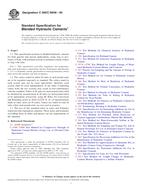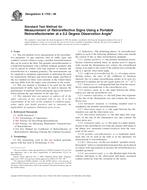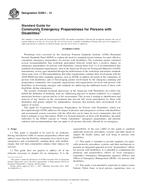1.1 This practice covers the procedures for calculating the viscosity index of petroleum products, such as lubricating oils, and related materials from their kinematic viscosities at 40 and 100oC.
Note 1 — The results obtained from the calculation of VI from kinematic viscosities determined at 40 and 100oC are virtually the same as those obtained from the former VI system using kinematic viscosities determined at 37.78 and 98.89oC.
1.1.1 Procedure A – For petroleum products of viscosity index up to and including 100.
1.1.2 Procedure B – For petroleum products of which the viscosity index is 100 or greater.
1.2 This standard does not apply to petroleum products with kinematic viscosities less than 2.0 mm²/s (cSt) at 100oC. Table 1 given in this practice applies to petroleum products with kinematic viscosities between 2 and 70 mm²/s (cSt) at 100oC. Equations are provided for calculating viscosity index for petroleum products having kinematic viscosities above 70 mm²/s (cSt) at 100oC.
Note 2 – 1 cSt = 1 mm²/s = 106m²/s.
1.2.1 In cases where kinematic viscosity data are not available at temperatures of 40 and 100oC, an estimate may be made of the viscosity index by calculating the kinematic viscosity at temperatures of 40 and 100oC from data obtained at other temperatures. Such viscosity index data may be considered as suitable for information only and not for specification purposes. See Test Method D 341, Annex A1.
1.3 The kinematic viscosity values are determined with reference to a value of 1.0034 mm²/s (cSt) at 20.00oC for distilled water. The determination of the kinematic viscosity of a petroleum product shall be carried out in accordance with Test Methods D 445, IP 71, ISO 3104, or ISO 2909.
1.4 The values stated in SI units are to be regarded as the standard.
Product Details
- Published:
- 11/01/2004
- Number of Pages:
- 6
- File Size:
- 1 file , 67 KB
- Redline File Size:
- 2 files , 160 KB


